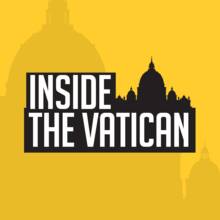In the flood of content rolling out for the 10th anniversary of Pope Francis’ election on March 13, 2013, you will find commentaries on his greatest accomplishments and most contentious decisions. Everyone, it seems, has an opinion about the pope. But how does Pope Francis understand what he’s been doing over the past decade?
That was the question we asked as a podcast team on a special deep dive episode of “Inside the Vatican.” After reviewing his magisterial teachings, his international trips and his curial, episcopal and cardinatial appointments, we honed in on a few foundational topics that, we believe, help us to understand the mind and heart of Pope Francis: evangelization and liturgy.
First up, evangelization. Regardless of what you think about Pope Francis, if you’re a Catholic, you know that the church exists to evangelize. But what do we mean by “evangelization”?
Everyone, it seems, has an opinion about the pope. But how does Pope Francis understand what he’s been doing over the past decade?
The papal biographer Austen Ivereigh notes that some Catholics today see the church in possession of a truth, which it boldly proclaims to the world through its doctrine. Pope Francis, he claims, has a different understanding of evangelization that begins with an encounter of mercy and love in the person of Christ. If that isn’t communicated first and foremost, the rest does not make sense. This has led Francis to prioritize the pastoral accompaniment of individuals living in morally complicated situations.
This is a risky strategy, says Larry Chapp, a blogger, commentator and self-described “old-fashioned Pope John Paul II Catholic.” He appreciates the pope’s passion for evangelization but is concerned this approach leads to a softening of the church’s counter-cultural message and ends up accommodating modern secularism. The church will “lose its salt,” he says, “and, like a chameleon, start to take on the coloration of whatever the current mood and opinion of the modern world is.”
This debate over the proper approach to evangelization in the 21st century is at the heart of the Francis papacy, and the current synod on synodality has given lay Catholics the freedom to voice their opinions about the church’s evangelizing mission. The discussions have brought complex pastoral and doctrinal questions to the fore, including those of women’s ordination, the reception of Communion and the inclusion of historically marginalized groups like L.G.B.T. Catholics. How the pope and the bishops address these topics is still to be seen, but it’s clear that Francis believes synodality will be the evangelizing mode of the church for the 21st century.
Pope Francis has a different understanding of evangelization that begins with an encounter of mercy and love in the person of Christ.
Second, the liturgy. Though only a very small number of Catholics love and celebrate the Traditional Latin Mass (the pre-Vatican II Mass according to the 1962 Missal), Pope Francis’ 2021 decision to suppress it has become one of the most contentious issues of his papacy. The importance of this decision is not in the decision itself, contentious as it was, but in the rationale beneath it: to preserve unity in the church and to protect the integrity of the Second Vatican Council.
If evangelization is the mission of the Catholic Church, the liturgy is its lifeblood. Anthony Ruff, O.S.B., a monk of Saint John’s Abbey and professor of liturgy and Gregorian Chant, believes the Traditional Latin Mass has become a flashpoint because liturgy is important to people. He sees the toxic debate around it as a sign that some traditional Catholics, as genuinely hurt as they are by the decision, reflect the modern culture. “The success of the more radical traditionalist views is somewhat of an index of the advancing secularization,” he says. “They almost reflect that secularization because they are so much a reaction to it.”
Larry Chapp understands Francis’ decision but notes the way in which it was done betrays an authoritarian streak in Pope Francis. “Like a liberal would say to himself, ‘I believe in toleration, but I’m not going to tolerate those who are intolerant.’ That’s Pope Francis’ approach here as well. He wants to reach out to the margins, but he isn’t going to reach out to those on the margins who don’t think we should reach out to those on the margins.”
The link between evangelization and liturgy is critical for Pope Francis. Synodality is a mode of being church in the vein of the Second Vatican Council, which taught from a disposition of dialogue and reconciliation. In order to evangelize effectively, the Catholic Church in the 21st century must be united, nowhere more so than at Mass according to the reformed rite of that same Vatican council.
How does Pope Francis understand what he’s doing? We could argue that these past 10 years have been a journey of reception and implementation of Vatican II. For that reason, critics on all sides will be left scratching their heads as they try in vain to ideologically compartmentalize Pope Francis, a missionary disciple for the 21st century.







